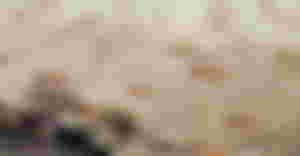Although the local population in Namibia also calls them circles of death and must not approach them, this African phenomenon, which has been confusing scientists around the world for decades, is better known as "fairy circles".
"Fairy circles" are called regular, round, bare surfaces of the soil surrounded by plains covered with grassy vegetation. Their diameter usually ranges from two to 15 meters. Strange lifeless circles disappear after a few decades. Smaller circles last an average of 24 years, while larger ones can survive for up to 75 years.
Their existence in Namibia has been known to scientists since 1970, when most conspiracy theorists linked them to UFOs, but scientists have presented several serious hypotheses about their possible causes. Although they are also seen in Australia, those in Namibia are by far the largest, surrounded by tall grass and spread at equal intervals.
The most famous legend of the indigenous tribes of Africa says that the circles are made by a dragon inhabiting the Earth's crust. Namely, his fiery breath creates bubbles and burns all the vegetation on the surface, and that is the explanation why the superstitious local population does not even want to approach the "fairy circles" - because they believe that they could instantly burn when they form.
Those with more optimistic beliefs claim that these are the imprints of the gods who guard them.

Scientists and laymen have speculated that these are the remnants of meteor strikes, places where zebras are thrown on the ground, toxins from the euphorbia plant, fungi or bacteria, magnetism or other energy fields, or even localized radioactive sites.
Until recently, the mystery was considered solved when the German biologist Norbert Jürgens from the University of Hamburg published research in which he states that this unusual phenomenon is the result of "eco-engineering", ie the termite psammotermes allocerus. During the study, he found this type of termite in more than 80 percent of the circles, as well as in all circles formed in recent times.
He hypothesized that they occur when termites feed on grass from the surface and that as the community in this isolated ecosystem grows, so does the number of circles.
Although the thesis seems rational, his work has been challenged by many scientists who also deal with the phenomenon of "fairy circles".
According to them, Jürgens confused cause and effect, that termites inhabited the circles later, seeing them as a suitable environment for the life of their communities.
- The appearance of such patterns in nature is very unusual. Strong forces are in force here - points out Stefan Gecin from the Environmental Research Center in Leipzig.
Gecin and his colleagues say that termites are otherwise arranged in irregular swarms in the wild and that they would never be able to form such regular shapes, adding that no evidence has been found so far that termites are to blame for circles.
For him, the logical explanation is that grass grows in self-regulating patterns due to limited water supplies. They compared the situation with the growth of plants in forests, for example, in a young forest, plants grow relatively close to each other, but over the years the vegetation thins so that the old trees have enough space and food sources. Such a "competition for resources" could be the cause of the formation of circles.
Despite all the attempts and various theories, to this day no one can explain with certainty the millions of these mysterious circles that appear in the oldest desert in the world.

Wonderful topic dear